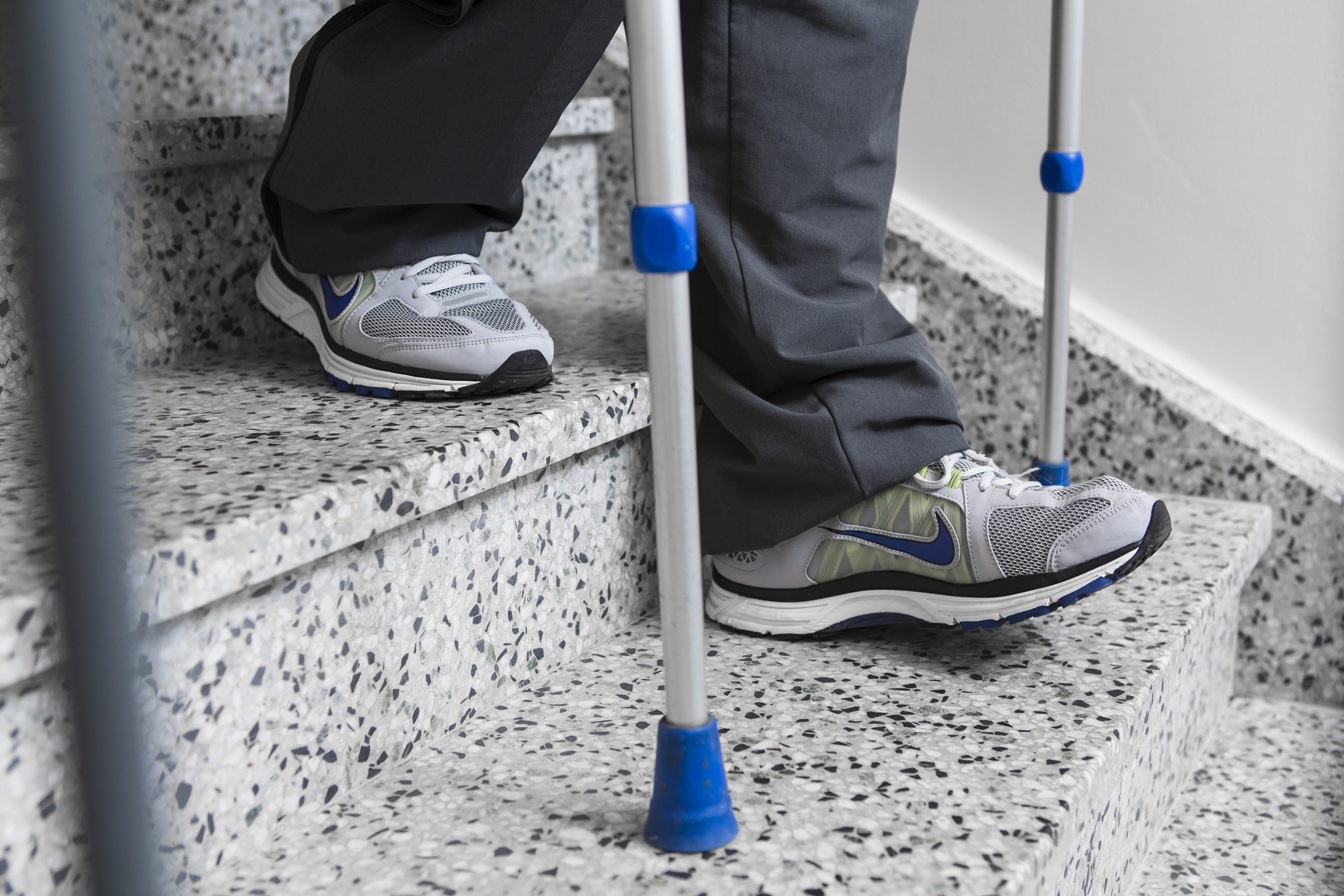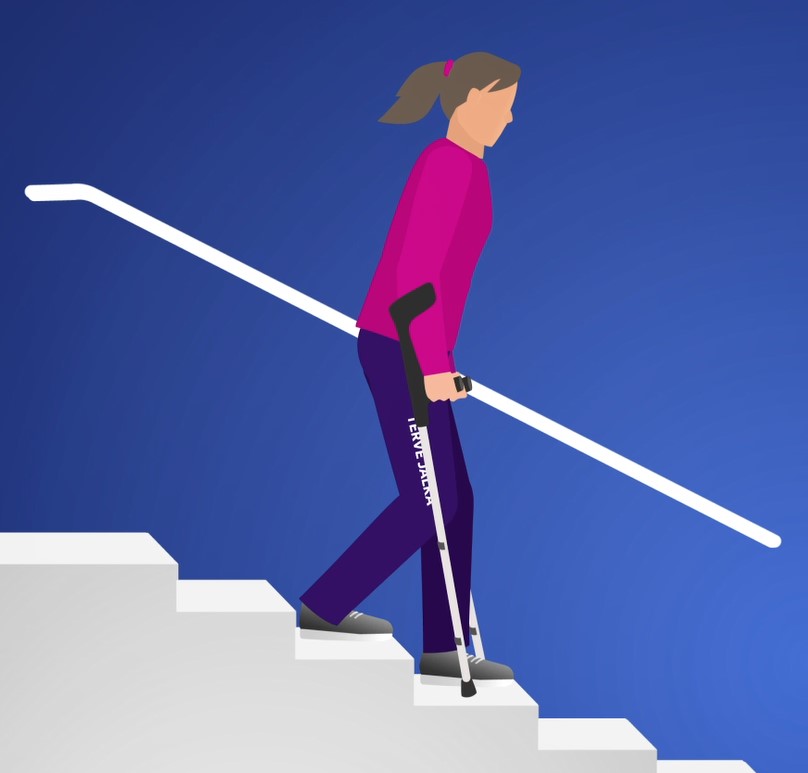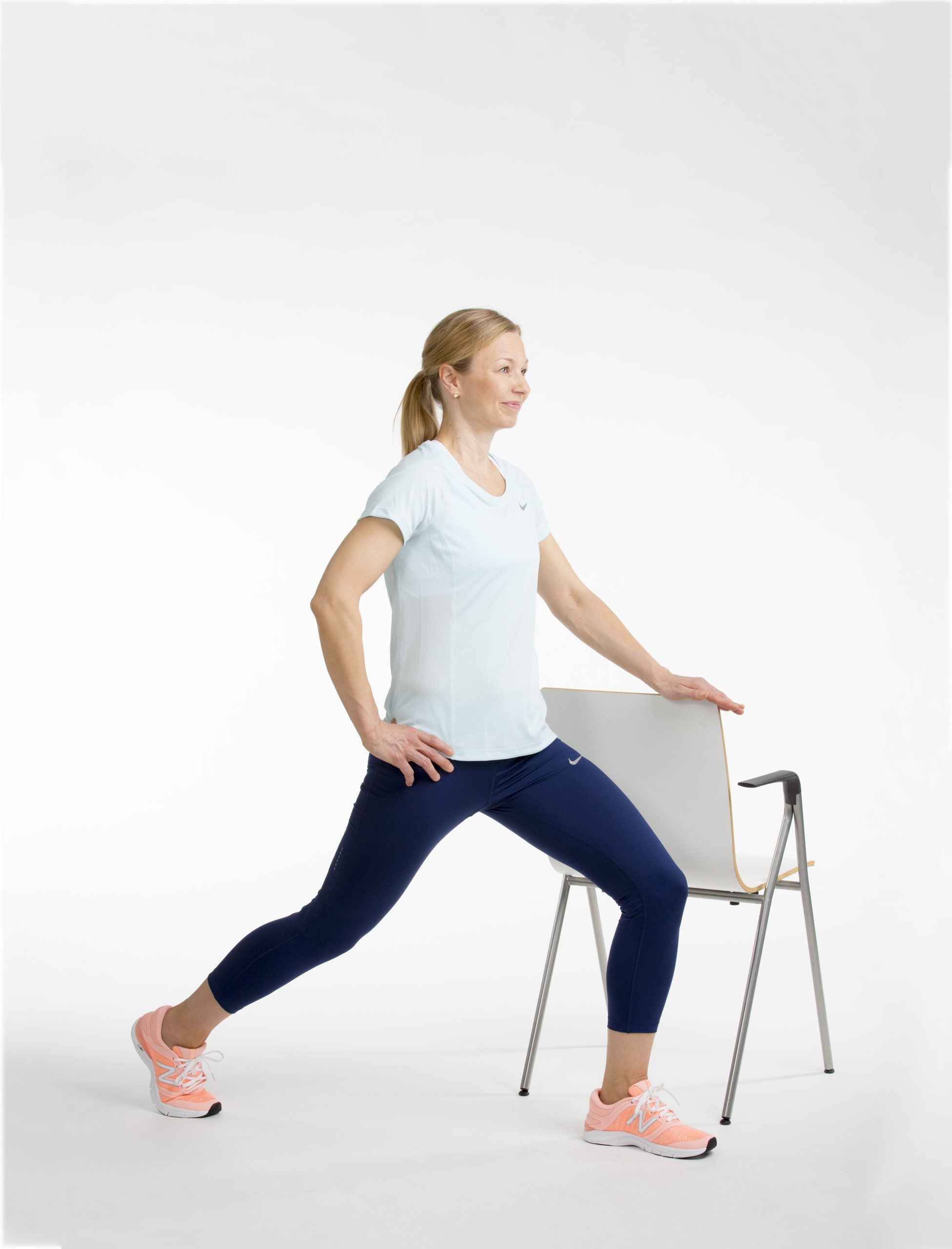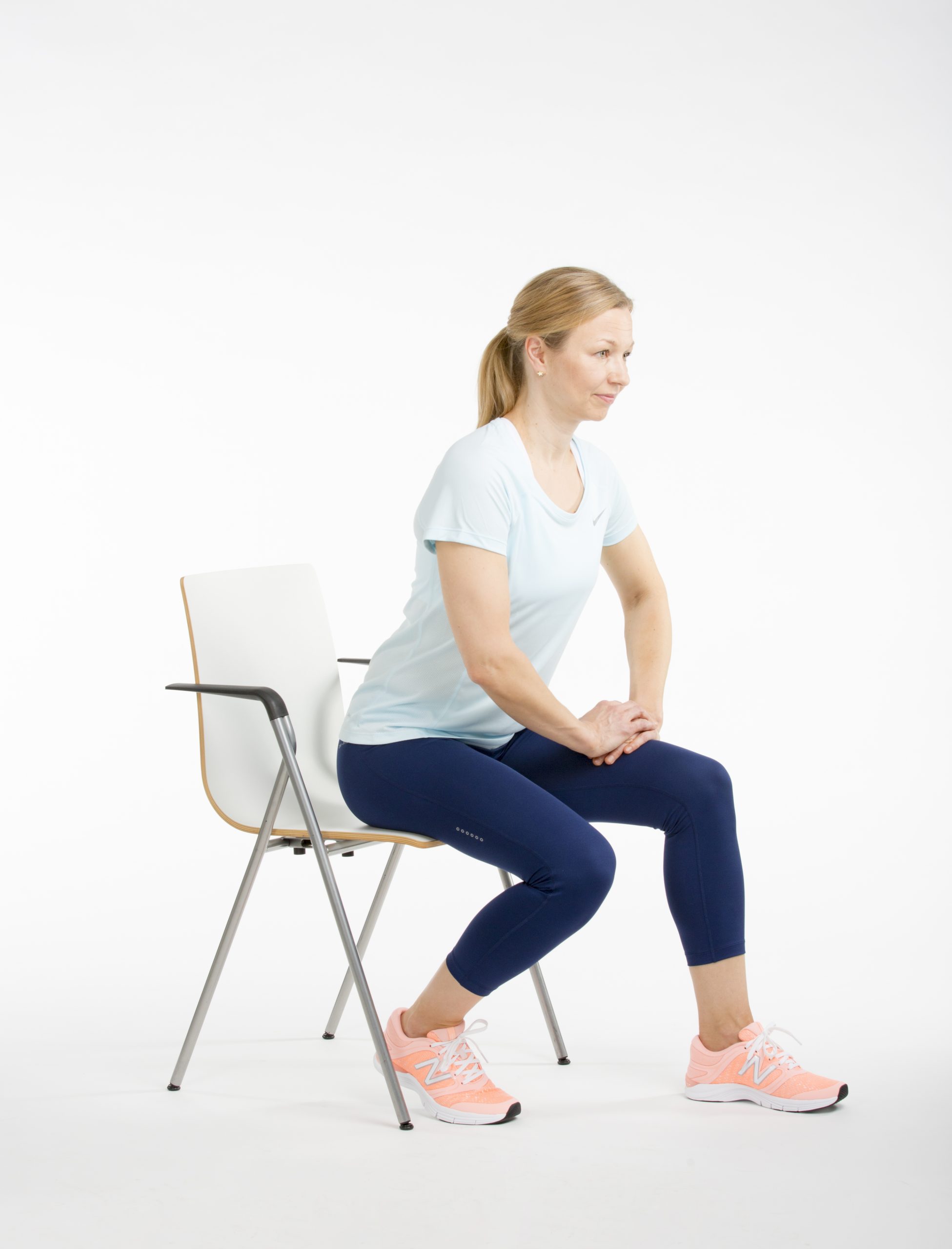Exercising instructions
The purpose of the exercising programmes is to support your rehabilitation after joint replacement surgery. Active independent exercises in mobility and muscle strength are important for achieving a good rehabilitation outcome. Always start exercising moderately so that your body gets used to the strain gradually and you learn the optimal performance technique. Increase the intensity of exercising gradually.

Moving about and rest
After joint replacement surgery, you can walk normally. At first, you will use the forearm crutches or rollator walker as a walking aid. You can put full weight on the operated leg. You can give up the forearm crutches one at a time, when you can walk in a controlled manner and without limping. To avoid excessive strain, it is preferable to walk short distances several times a day, even indoors at first. Walk longer distances when pain permits.
It is advisable to use ice cleats on shoes and ice grips on the forearm crutches. In the future, Nordic walking poles will help to achieve a good walking rhythm and balance.
It is important to rest several times a day in order to balance the strain. Excessive strain can slow recovery and make it difficult to use the joint, increasing pain and swelling. You can also rest on your side and place a pillow in between the knees to improve the position. Avoid prolonged sitting. Holding the foot in a raised position prevents swelling. Cold treatment in the procedure area can help to reduce pain and swelling.
Walking with forearm crutches
Practise walking with the forearm crutches already before the surgery. Watch the videos to learn the technique for different situations.
Synchronous pace
Alternating pace
Up the stairs
Down the stairs


Hip exercise programmes
Level 1
Stretching the hip flexors and front thighs
Squatting over a chair
Hip external rotation 1
Pelvic lift
Level 2
Deep squat with a resistance band
Balance exercise – standing on one leg
Hip external rotation 2
Pelvic lift using a ball or chair
Level 3
Step up with leg raise
Balance exercise – dynamic
Hip external rotation 3
Pelvic lift with leg extension
Knee exercise programmes
Level 1
Mini squat
Rising on toes
Stretching the front thigh
Stretching the back thigh
Level 2
Step up and down
Deep squat with a resistance band
Balance exercise – standing on one leg
Balance exercise – dynamic 1
Level 3
Balance exercise – dynamic 2
Reverse lunge
